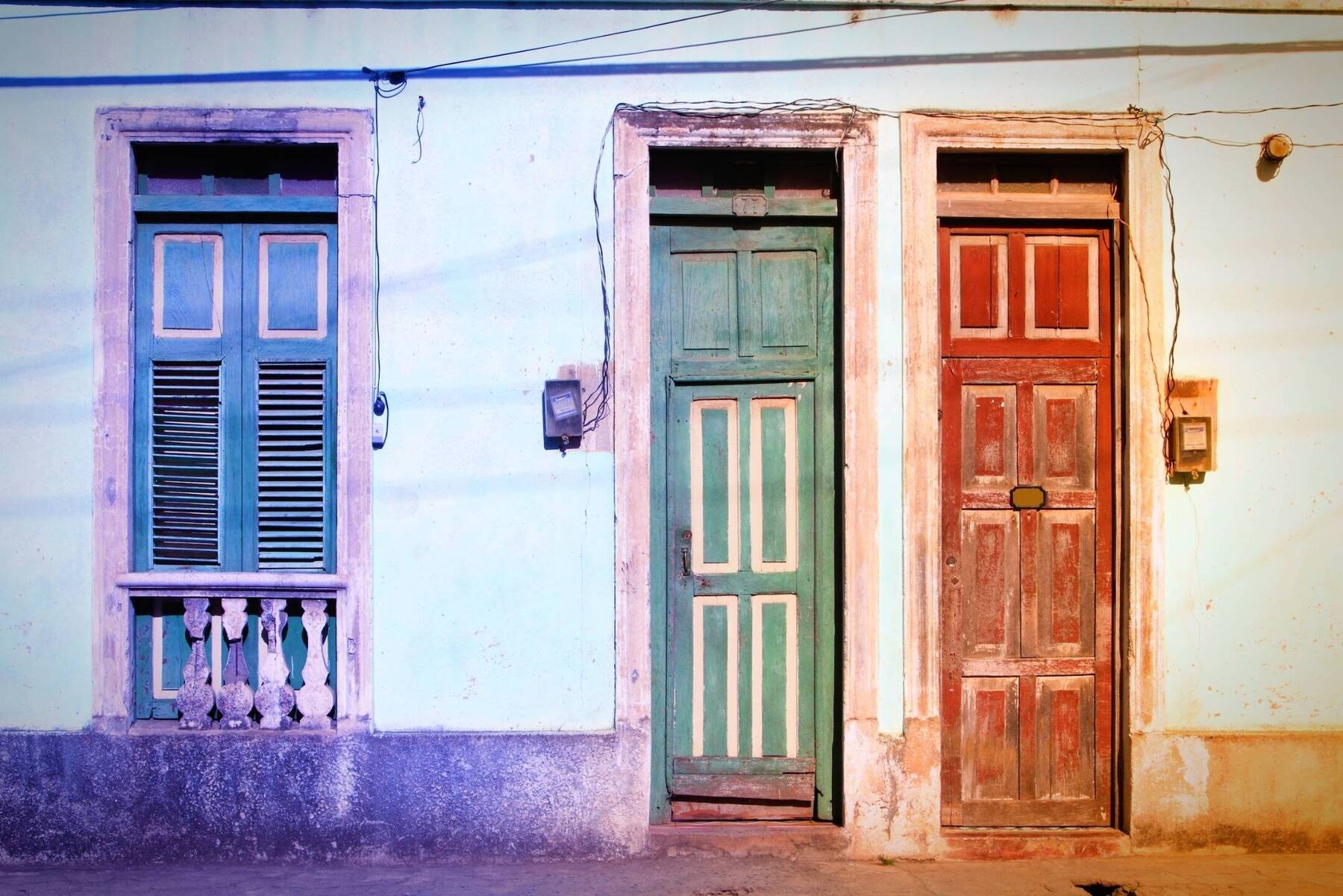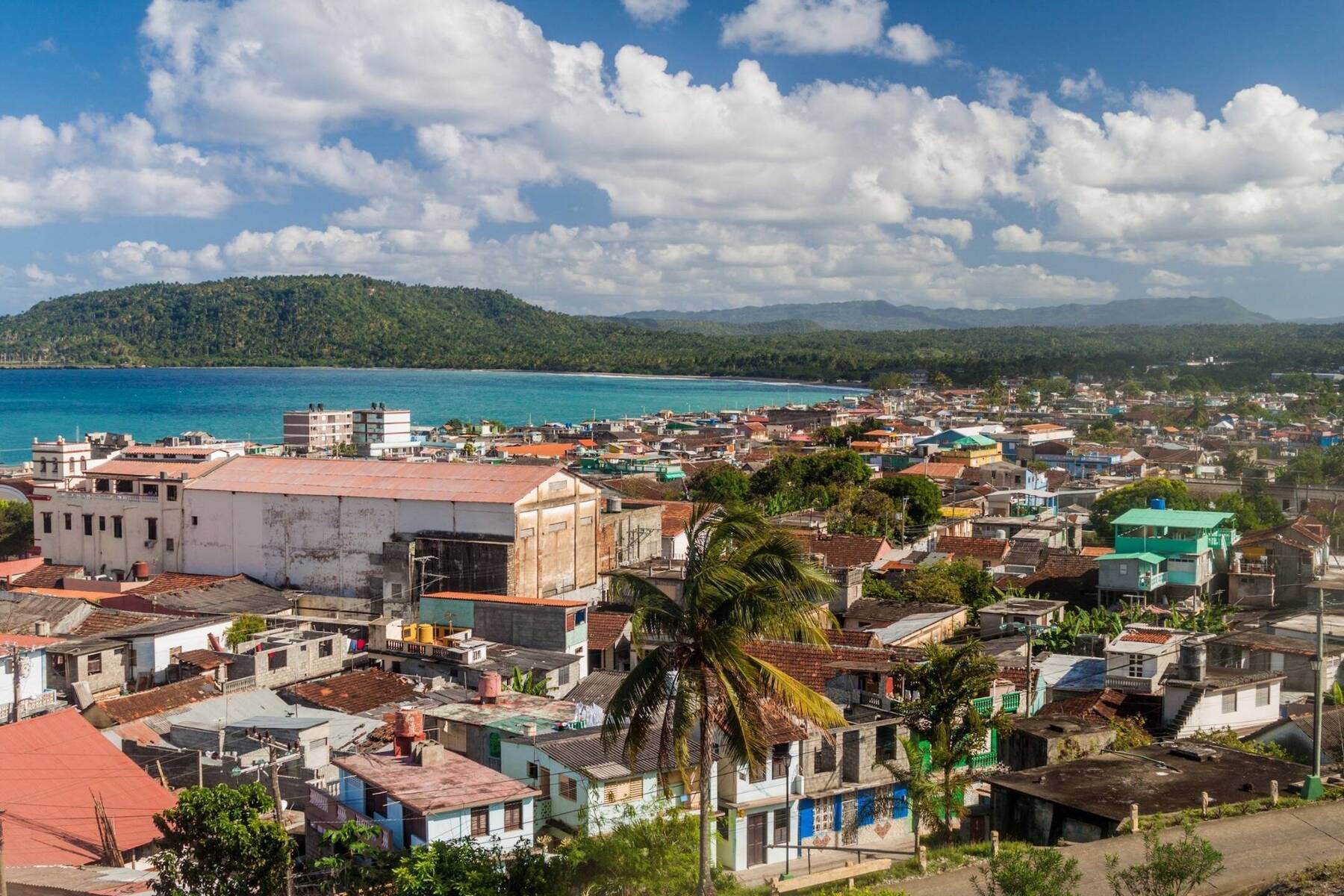Plaza Independencia
Christopher Colombus arrived here by sea in 1492 and apparently erected a cross on the beach, one of twenty-nine he planted as he discovered the New World. Only one is known to have survived. The small, brown wooden cross, now a Cuban National Monument, can be found in Catedral de Nuestra Señora de la Asunción, which was built in the early 1800s and is situated in Plaza Independencia, Baracoa’s main square. A stained glass window within the church depicts Colombus planting the cross, known as Cruz de la Parra, at what he named Porto Santo.
Plaza Independencia can be found at the end of Calle Antonio Maceo, the main street of Baracoa, which is a blaze of vibrant dated architecture, candy-striped pillars and wooden verandas. Behind the colourful facades are expensive stores whose stock is out of the price range of most Cubans - the average salary being only 1CUC a day. Ration books are still in existence in this country. Restaurants, hotels and government tourist operators can also be found along this street.
Also situated on the street is Casa del Cacao. This café is decorated with photos illustrating the growing and processing of cacao, one of Baracoa’s main industries. There is a small factory on site and chocolates and drinks can be purchased and sampled; chocolate with mint, chocolate with rum, hot chocolate… If you’re keen to learn more about cacao, a tour of a Cacao farm on the outskirts of town can be booked through Ecotur, the government tourist operator.
In the evening, Plaza Independencia is lively with people socialising. The sound of guitars and maracas blends with chatter and other music from a number of nearby bars and cafés. Enjoy the friendly atmosphere after a meal served with lechita - a coconut sauce which Baracoa is known for, with a drink at tables and chairs on the pavement.













Comments